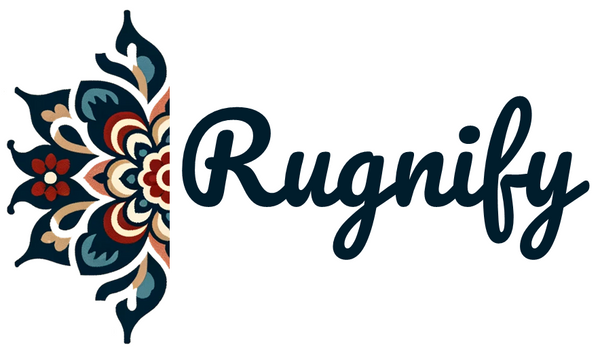When autumn arrives and nights draw in, there’s nothing like a hand‑knotted Afghan rug to warm a room. Among Afghanistan’s myriad rug styles, Chobi (sometimes spelled Chobi, Chobi Ziegler or Chobrang) carpets hold a special place. Their name is derived from the Farsi word chob, meaning wood, which hints at the natural dyes and muted colors used in these rugs. These pieces are are cultural artefacts, the result of generations of artisans spinning wool, harvesting plant dyes and tying millions of knots by hand.

The Story Behind Chobi Rugs
The Chobi style emerged during the late twentieth century, when Western buyers wanted antique‑looking rugs with subdued, “wood‑tone” palettes. Afghan artisans responded by blending traditional Persian designs with their own weaving heritage; they switched from pure wool foundations to a cotton warp and weft, creating a rug with more drape, and revived old vegetable‑dye recipes. Refugee weavers in the Pakistan–Afghanistan border region played a pivotal role in this renaissance.
Today, authentic Chobi rugs are still made in small workshops using hand‑spun wool and natural dyes. Artisans extract colors from roots, fruit skins, tree bark, nut shells and dried flowers. The resulting palette is soft and earthy - think creamy ivory, sand, walnut, muted reds and sage greens - and has an abrash (subtle color variation) that gives each rug character. Creating a 9×12 ft Chobi rug can take 12–14 months, and more than 70% of the work happens before knotting even begins: gathering dye materials, hand‑spinning wool and preparing the loom.

Recognizing Chobi Characteristics
- Floral and botanical motifs: Chobi rugs often feature large blossoms, vines and palmettes arranged in a symmetrical design with a central medallion and ornate borders. These patterns are inspired by nature rather than tribal symbols, giving the rugs an elegant, universal appeal.
- Subtle hues: Natural dyes create mellow tones – beige, tan, copper, maroon and green - that feel timeless. Unlike the saturated colors of many Persian carpets, Chobis whisper rather than shout, which is why they blend effortlessly into modern interiors.
- High knot density: A typical Chobi has over 100 knots per square inch (KPSI), and some reach 1000 KPSI. The quality of the weave and the lanolin‑rich wool gives them a soft hand and a luminous sheen.
- Hand‑spun wool & cotton foundation: Spinners use drop spindles to twist wool into thick, slightly irregular yarns that create texture and a desirable abrash. Cotton warps add strength and reduce weight, making the rugs easier to move and clean.
- Tea washing: Many Chobi rugs undergo a tea‑wash process where the finished rug is washed with brewed tea or a mild dye to give it an antique patina. The wash mellows the colors and leaves the rug with a warm, golden glow.
Decorating With Chobi Rugs
The neutral palette and organic motifs of Chobi carpets make them surprisingly versatile. Here are a few ideas for incorporating them into your home:
1. Anchor a Living Room
A large Chobi rug defines a seating area while providing softness underfoot. For example, Rugnify’s Exquisite 8×10.5 ft Chobi Chobrang Handmade Afghan Rug features intricate floral patterns in hushed beige and gold tones. Its generous size grounds a conversation area, and the muted colors complement both traditional furniture and modern pieces. Pair it with textured throws and wooden coffee tables to echo the rug’s earthy origin.

2. Bring Elegance to a Dining Space
Under a dining table, a Chobi rug adds warmth without overwhelming the room. The Elegant Chobi Artisan Area Rug (8 × 6 ft) offers a serene palette and classic design that won’t compete with your china or artwork. Because Chobi carpets are hand‑knotted from durable wool, they can handle the traffic of family dinners and holiday gatherings while resisting stains thanks to their natural lanolin.

3. Create a Cozy Entry or Reading Nook
Smaller Chobi rugs are ideal for foyers and cozy corners. The Northern Afghan Chobi Wool Rug (3.3 × 5.2 ft) features traditional motifs in a compact size that suits entryways or reading nooks. Its deep blues and taupes invite guests in and set an elegant tone for the rest of the home. Place it on top of a neutral sisal runner for added texture.
4. Layer for Luxe Comfort
Layering rugs adds depth and comfort, particularly during the chilly months. Use a neutral jute or sisal base and top it with a smaller Chobi rug. The muted colors and fine pattern provide contrast without clashing. This technique also allows you to showcase an heirloom or smaller vintage piece in a larger room. Chobi kilims, flat‑woven versions of the design, are perfect for this purpose; they share the same palette and motifs but have a thinner profile.

Why Invest in a Chobi Rug?
Chobi rugs are considered luxury items thanks to the quality of their materials and the labor‑intensive process that goes into making them. Because they are hand‑knotted, a well‑cared‑for Chobi can last for generations and even appreciate in value. Natural dyes are fade‑resistant and become richer with age, while hand‑spun wool develops a soft sheen. In an era of fast décor, owning a Chobi rug is a way to support traditional craft and bring an enduring piece of Afghan heritage into your home.
Final Thoughts
Choosing a Chobi rug is about more than filling a space; it’s an invitation to bring warmth, artistry and history into your daily life. Each rug represents months of work by skilled Afghan weavers who spin their own wool and gather plants to make dye baths. The resulting carpets have a quiet beauty that suits modern minimalism, rustic farmhouse interiors and classic décor alike. As you prepare your home for the holidays, consider a Chobi rug from Rugnify’s collection. Whether you choose a grand 8×10 ft masterpiece or a small accent piece, you’ll be investing in sustainable craft and creating a stylish foundation for memories to come.

